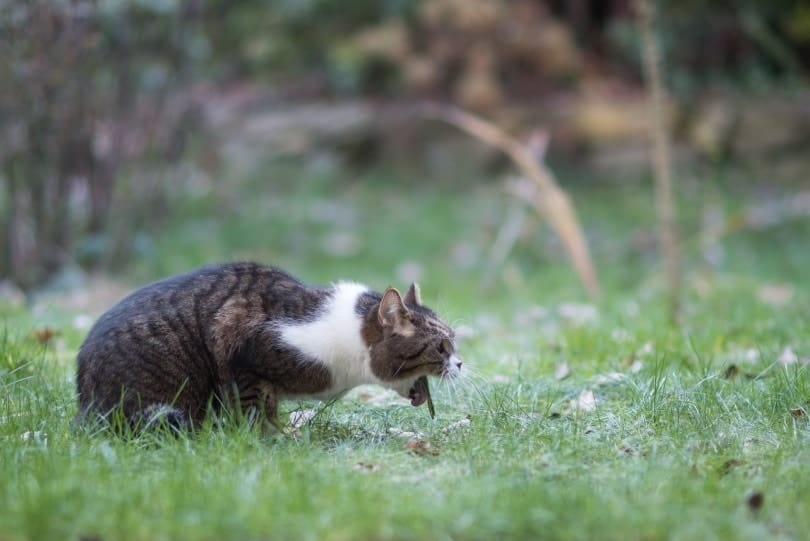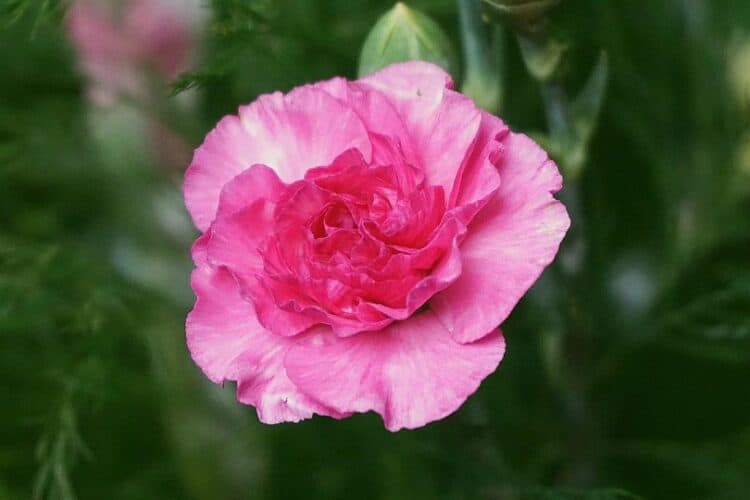You may have heard some house plants and flowers are toxic to cats, so you might be on the edge of panic after seeing your fur-baby munching on a carnation. The good news is that carnations are only mildly toxic, so while your pet will be uncomfortable for a while, they are likely not in any immediate danger.
Dianthus caryophyllus, or carnations, are common in floral arrangements due to their beauty and light scent. They also have several meanings, including motherly love, and they can be worn to support veterans, at funerals, or symbolize socialism, depending on the color. No matter why you’re displaying them in your home, rest assured that your family pet should be okay with some extra love.
Carnations Are Mildly Toxic
Any part of the carnation can cause dermatitis, including the petals, leaves, and stems. Dermatitis then affects the mouth, esophagus, stomach, and intestines to cause digestive issues that are typically mild. Most cats should be watched closely for signs of distress, but some may need more urgent care. Call the vet immediately if your cat is:
- Very young
- Elderly
- Pregnant
- Sick
Common Symptoms
Depending on how much of the carnation your cat ate and whether they swallowed any of it, they may experience various symptoms. They will most likely drool excessively due to mouth irritation caused by dermatitis, but you may also see these symptoms:
- Vomiting
- Diarrhea
- Abdominal pain

When You See the Vet
Because you can’t be sure what your cat’s reaction to the flower will be, it’s recommended that they see a vet as soon as possible. The vet will need to know how much of the carnation the cat ate and the last time they ate a regular meal. Your kitty should see their vet whenever they’ve eaten something harmful and are experiencing symptoms.
Treatment & Recovery
Unfortunately, there’s not much you can do to treat carnation poisoning other than letting it pass. The vet may decide to induce vomiting, but a significant amount may cause more irritation, so this decision is made on a case-by-case basis. You shouldn’t attempt to induce vomiting on your own before first consulting with your kitty’s veterinarian for evaluation and guidance. Intravenous fluids may also help flush the toxins out of their body and speed up recovery time.
One of the best things you can do as a cat parent is to be there to reassure and support them. If the vet has given any at-home care instructions, you should follow those as well. However, it shouldn’t take long for your flower-hungry feline to fully recover.
Preventing Carnation Poisoning
Cats are notorious for being curious eaters. It can be challenging to prevent chewing on or eating things they shouldn’t, even if they’ve had a negative experience. If you haven’t been able to keep your cat from eating plants, you can do a few things to prevent future carnation poisoning.
- If you have indoor cats, leave the carnations outside.
- Leave carnations in a room they don’t have access to.
- Put flower arrangements behind glass, like in a display cabinet.
- Use hanging planters that are harder to reach.
- Set vases on top of foil or another deterrent (if you want to be sneaky).

Other Toxic Flowers (+ Safe Ones to Use Instead)
Many of the flowers found in bouquets are toxic to pets. Daffodils can cause serious health concerns, such as cardiac arrhythmias and difficulty breathing. Cat owners are warned to avoid Easter lilies because even the pollen from the flower can result in kidney failure.
Other flowers that are toxic to cats:
- Azalea
- Philodendron
- Cyclamen
- Sago palm
- Tulips
- Hyacinths
- Kalanchoe
- Autumn crocus
- Oleander
- Rhododendrons
Instead, think of bringing these cat-safe plants into your home:
- African violet
- Spider plant
- Boston fern
- Orchid
- Mosaic plant
- Calathea
- Gloxinia
- Marigold
- Polka dot plant
- Venus fly trap
Conclusion
Even though you don’t have to worry about life-threatening reactions to carnations, you should still be mindful of where you keep them to avoid uncomfortable symptoms should your cat get curious. If you decide to avoid toxic flowers in your home altogether, there are many other options available that offer all the benefits of keeping indoor plants without the danger of harming your loveable but mischievous fur-baby.
Featured Image Credit: Pixabay














